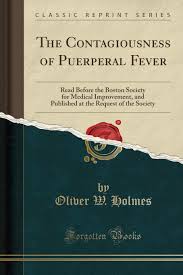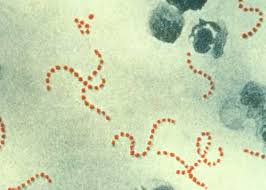28-minute read
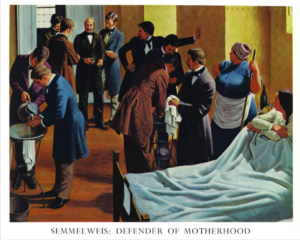
Chapter 2-B:
A longer, but more trip in the Way-Back Machine
If you started reading the Mayday series, you already know that is devoted to fixing a very specific problem — the inappropriate and potentially dangerou use of electronic fetal monitor on healthy laboring women with normal or “low-risk” pregnancies. Chapter 1 described this contemporary problem in considerable detail.
What it didn’t do was give any in-depth information as a backdrop the issue so readers would have a comprehensive understanding of the world in which obstetrical medicine developed and who different things are today.
So I’m providing another ride in my “Way Back Machine” that provides readers with a view of the medical landscape from 5,000 feet or about a mile high so we can understand the early development of medical science in general and obstetrics in particular, both before and after its practices were based on scientific principles and augmented by modern medical inventions like antibiotics and safer anesthetic agents.
This ride in the Way-Back-Machine also includes the daily experience of childbearing women before obstetrical medicine was able to effectively treat pregnancy complications, and afterward, when routine use of risk-screening (which helps to determine who does and doesn’t needed additional help) and obstetrical medicine became sufficiently advanced that is could reliably treat most of the formally-fatal complications of pregnancy and childbirth. .
After reading these overviews, we can use that newly acquired perspective to better help us deal with the EFM issue.
For those who didn’t missed the previous post, here is a short synopsis Ch. 2-A:
The previous story in the 1840s, with Austrian obstetrician Ignaz Semmelweis, the extremely high rate of maternal deaths from “childbed fever” in his hospital and unresolved “hand-washing” controversy.
As an assistant professor of obstetrics at Austria’s largest general hospital (5,000-7,000 births a year) Semmelweis’ was able to track the source of these fatal infections to the unwashed hands of doctors and medical students and some invisible substance left on their hands after they performed autopsies on new mothers who died from childbed fever.
Based on this understanding, Semmelweis invented a simple and effective process for keeping invisible infectious material from being carried from carried on the hands of doctors and medical students from the morgue to the labor ward and spreading the deadly pathogen directly from the doctor to each patient that he examined.
In the final frame, this turned out to be quite simple — Dr. Semmelweis simply asked all the doctors and med students to wash their hands in a solution of chlorinated lime water (household bleach) after doing dissections and both before and after they examined labor patients.
Despite his solid scientific evidence, the obstetrical staff flatly rejected his hypothesis. Worse yet, all his professional colleagues were insulted when he asked them to wash their hands and rinse them in a germicidal solution before and after they provided any care to patients.
They refused, insisting that:
“A gentleman’s hands could never cause their patients harm.”
Ch. 2-B starts with the efforts of a tiny handful of other doctors who believed Semmelweis was right and who brave enough to say so in public, even though the faced scathing ridicule by other doctors.
Part 2B ~ New ideas by doctors brave enough to speak up!
Just as Semmelweis’s work preceded Pasteur, Pasteur also had physician-supporters who shared his basic conclusions (if the not all the details) that infection was a contagious disease spread by something that couldn’t be seen with the naked eye.
 These included Dr. Alexander Gordon (1752-1799), who was a renowned Edwardian obstetrician of Aberdeen, Scotland and the first person to describe the infectious nature of childbirth fever.
These included Dr. Alexander Gordon (1752-1799), who was a renowned Edwardian obstetrician of Aberdeen, Scotland and the first person to describe the infectious nature of childbirth fever.
His 1795 Treatise on the Epidemic Puerperal Fever was written half a century before Semmelweis and the new science of bacteriology.
Other fellow travelers of Semmelweis included Dr. White, also of Aberdeen and the American physician (and father to a future Supreme Court Justice) Oliver Wendell Holmes.
However, the medical profession’s herd mentality fought tooth and nail against these ideas for close to a hundred years. During that time, the majority of European and American doctors collectively ridiculed the “crackpot” idea that van Leeuwenhoek’s invisible wee beasties could possibly be responsible for infections that indiscriminately killed large numbers of newly delivered mothers and surgical patients. In their mind, anyone who associated with such nonsense was either an idiot or a charlatan and certainly not worthy of their respect or their time!
 Dr. Oliver Wendell Holmes ~ true American Hero
Dr. Oliver Wendell Holmes ~ true American Hero
Thankfully, this animosity among doctors of opposing views was a two-way street. In 1843, the American doctor Oliver Wendell Holmes delivered a poetic zinger on the origins of puerperal sepsis, and the issue of theory versus common sense.
“…. it does appear a singular coincidence that one man or woman (i.e. one doctor or midwife) should have 10, 20, 30 or 70 cases of this rare disease following his or her footsteps, with the keenness of a beagle, through the streets and lanes of a crowded city, while the scores [of other doctors] that cross the same paths on the same errands know it only by name” (that is, have no cases whatsoever of puerperal sepsis in their own practice!).
Then he got real serious and dropped the big bombshell:
“The time has come when the existence of a private pestilence in the sphere of a single physician should be looked upon not as a misfortune, but as a crime.”
“The Contagiousness of Puerperal Fever”; 1843
by Oliver Wendell Holmes, MD
https://embryo.asu.edu/…/contagiousness-puerperal-fever-1843-oliver-wendell-holmes
Before leaving the topic of “germs”, we need to talk about life-saving discoveries in the field of bacteriology that occured in the 1860s.
The particularly important part is about Sir Joseph Lister, surgeon to England’s Queen Victoria. He now is famous as the “Father of Modern Surgery” (1865)
Like many other discoveries and inventions, the story bacteriology is also not uniformly linear.
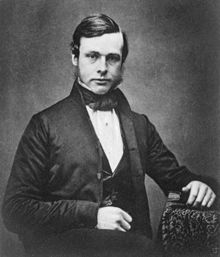
Sir Joseph Lister, Surgeon to Queen Victoria, inventor of the principles of antisepsis, sterile surgical technique and and Father of Modern Surgery
In 1864 — 15 years before Pasteur’s Germ Theory was published — Sir Joseph Lister, Royal Surgeon to Queen Victoria and pioneer of antiseptic surgery, read all the studies by Louis Pasteur on bacterial pathogenesis and was extremely impressed. Unfortunately, the majority of the medical profession continued to disagreed and discount both Pasteur and Lister ideas about microscopic bacteria and other kinds of invisible “germs”.
Then a serendipitous series of events occurred that kicked the slow progress of medical science into high gear, where it has remained ever since.
Lister is often identified as the father of modern surgery but what he did that was so unique was develop the antiseptic and aseptic techniques and the process of sterility that we still use today to make surgical procedures safe from infections.
Unlike Pasteur, who was a chemist and not a doctor, Lister had the ability to put Pasteur’s theories to the test in a clinical setting. Even though Pasteur had no background or personal knowledge of microbes, and was flying mostly by the seat of his pants, he decided to do just that.
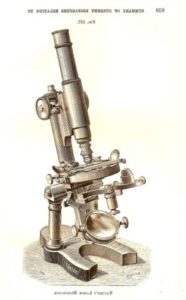 Dr. Lister accepted Pasteur’s theory that some type of biological entity — perhaps a bug too small to be seen with the naked eye — was responsible for the virulent post-operative infections that at times killed as many as 90% of Lister’s post-op patients.
Dr. Lister accepted Pasteur’s theory that some type of biological entity — perhaps a bug too small to be seen with the naked eye — was responsible for the virulent post-operative infections that at times killed as many as 90% of Lister’s post-op patients.
As Queen Victoria’s personal physician, he naturally did not want to take any chances with her health, and so Lister decided to implement Pasteur’s theories by using another new idea — that of sterilization — with the goal of killing off 100% of these unseen pathogens. After each use of his surgical instruments, Lister submerged them for several minutes in boiling water. Without touching the newly sterilized instruments, he wrapped them in clean cloth squares that he had sterilized earlier by using a hot iron to flatten each fabric piece.
Having established that heat — submersion in boiling water or steam — would reliably kill off pathogenic bacteria, Dr. Lister used a pressure cooker to created the first “sterilizer”.
Then he used scalding hot steam to sterilized all his surgical instruments, cloth drapes, bandages and other medical equipment or other supplies that might come in contact with his patients during surgery. Deaths in his practice from infection dropped like a stone to less than 5%.
This truly seemed like a medical miracle!
We have Lister to thank for discovering the principles of Medical Asepsis and Sterile Surgical Technique
Lister went on to develop the general principles of asepsis and sterile surgical technique still used today.
This included scrupulous hand-washing between patients, with close attention to cleaning under one’s fingernail beds, and the daily scrubbing of hospital floors, walls, and other equipment with a germicidal solution.
Equally important among Dr. Lister’s contributions to medical science was his principle of ‘surgical sterility‘ or ‘sterile technique‘ that continues to be used by surgeons and obstetricians, as well as other medical and healthcare professionals all over the world.
For this reason, Dr. Lister is still referred to as the Father of Modern Surgery and his name is rightly associated with the ‘germ-killing’ mouthwash Listerine and other such products.
@@@@@@@@@@@@@@@@@@@@@@@@@@@@@@@@@@@@@@
An aside for the curious reader:
The trick for handling but not touching sterilized instruments is to include an extra pair of ‘pickup forceps’ in each batch of instruments to be sterilized.
After exhausting the steam, and the instruments have cooled, you carefully take the pickup forceps out by their handles w/o touching the sterile end of the forceps or the other instrument. These pickup forceps are then used to carefully remove the remainder of the sterile instruments, placing each on its sterile wrapper. This way they can be handled and packaged without compromising their “surgical sterility”.
This kind of arcane knowledge comes from being a nurse in the days before sterile plastic disposables from China. This isn’t my only “back-in-the-day” story, but will have to do for now.
 The first modern medical technologies and wonder drugs ~ 1895 to 1945
The first modern medical technologies and wonder drugs ~ 1895 to 1945
The first x-ray machine was built in 1895. Blood typing, which is critical to making blood transfusions safe, was first used in 1907.
Penicillin, which was the first antibiotic, and sulfa, the first safe and effective internal antiseptic drug, were discovered in 1928 (England) and 1932 (Germany) respectively. This category of pharmaceuticals was widely talked about as “wonder drugs” or ‘magic bullet’.
However, penicillin was not used to treat an American patient until March 14, 1942, and then only because the patient — a woman dying from puerperal sepsis after a miscarriage — was a special test case. The ‘wonder drug’ of penicillin was not available to the general population of the US until the end of WWII (1945).
The development of sulfa, penicillin and subsequent internal antiseptics/antibiotics were the most critical discoveries in 20th-century medicine. It is this particular advance that makes our entire modern hospital system possible.
The vast majority of modern medical treatments and surgical procedures are only available in hospitals because such specialized equipment and the use of highly trained staff are both necessary. For this system to work, people have to have confidence that the effective treatment they received in the hospital will not be negated by dying of hospital-acquired infection.
Hospital patients routinely undergo one or more invasive procedure, from simple injections with a hypodermic needle, to major operations using surgical instruments and various medical devices that penetrate the human body.
Common hospital procedures also include physical examinations and tests that involve putting a gloved hand, instrument, or medical devise into a bodily orifice – ear, nose, mouth, throat, gastrointestinal tract, urinary meatus, vagina, rectum — all places that are naturally rich with bacteria and potentially deadly pathogens that could easily spread infectious disease if anything is mishandled.
In addition, are the bio-hazards generated when caring for infected wounds, post-op drainage tubes, bandages and irrigation of body parts or organs with sterile water or solutions containing drugs. Again, a slip up in handling any of these highly contaminated bio-wastes can quickly spread a virulent infection.
What makes hospital care relatively safe is the sterility of all its medical equipment, combined with access to antibiotics “just in case”.
The other reason people are hospitalized is serious, even potentially-fatal illnesses that include infections of all types. Without access to effective antibiotics, concentrating the sickest of sick in hospitals would quickly turn these facilities into breeding grounds for contagion.
Before the discovery of antibiotics, people generally avoided hospitals if, at all possible, they were seen as the place were people died. Historically, hospitals were charity institutions run by religious orders, They were staffed by nuns and monks who devoted their lives to caring for the dying, and homeless sick.
Amazing and Miraculous Wonder Drugs ~ the ability to kill germs while NOT killing the patient!
It was the scientific discoveries of van Leeuwenhoek, Semmelweis, Oliver Wendell Holmes, Pasteur, Lister, Koch, Ehrlich, Alexander Fleming, Gerhard Domagk, and many others who helped develop the critical missing piece of the puzzle – antiseptic drugs, a category very importantly defined as substance that (a) killed microscopic – that made it possible to safely use all the other sophisticated abilities of modern medicine.
Our society stands on the shoulders of mental giants whose scientific research identified the microscopic source of infection and contagious disease.
Next were the pugnacious mental giants that built on this knowledge by developing principles that protect and preserve ‘public health‘ — rules for personal hygiene and public sanitation, safe drinking and sewer systems that keep contagious disease and epidemics from wiping out our civilization.
This was followed by the pioneering work of physician-scientists who developed the principles of asepsis, surgical sterility and a system of sterilization to prevent exposure of patients to contaminated equipment.
Last but certainly NOT least, we are forever grateful to the scientists who developed effective drugs treatments for infection.
Taken together, scientific understanding of bacteriology, public health measure to prevent contagion and the ability to effectively treat infections with antibiotic drugs makes modern life in highly-populated urban centers and modern hospital-based services possible.
1945~ The Birth of Modern Obstetrics as a scientifically-mature science
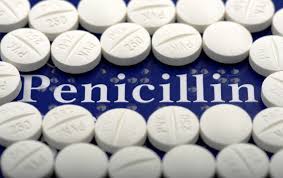 For obstetrical medicine, the development of antibiotics was indeed the critical “missing piece”. The new medical and surgical procedures capable of rescuing mothers and babies were usually invasive. But before antibiotics were available, the use of these obstetrical procedures also increased the rate of maternal deaths due to untreatable infection. Access to effective antibiotics made the use of obstetrical interventions so much safer.
For obstetrical medicine, the development of antibiotics was indeed the critical “missing piece”. The new medical and surgical procedures capable of rescuing mothers and babies were usually invasive. But before antibiotics were available, the use of these obstetrical procedures also increased the rate of maternal deaths due to untreatable infection. Access to effective antibiotics made the use of obstetrical interventions so much safer.
For obstetricians, access to antibiotic drugs was the last and most important scientific discovery — for the first time in human history, all the critical elements of modern obstetric medicine necessary to treat complications of pregnancy and childbearing were all present and accessible at the same time and in the same place — the obstetrical department of the average American hospital.
Modern scientific obstetrics had finally come of age.
Obstetrics — Before and after the rise of modern medical science
Scientific obstetrics remains one of the most important medical miracles of all times.
But before we had access to modern obstetrical medicine and modern hospitals, simply being a childbearing woman was a terribly dangerous job, one that too often ended in tragedy.
The reasons were many, some related to maternal health and others to social prejudice, economic hardships, and the low standard of living and that regularly afflicted such a large proportion of Americans, most especially ethnic minorities and new immigrants.
Being poor and a childbearing woman doubled your chances of dying prematurely, often as a result of your gender-related biology.
Continue ~ Chapter 3: The Bad Old Days for Childbearing women: before medical science & antibiotics
Definitions of ‘Efficacious‘ vs. ‘Effective‘
… the clinical and translational science literature selectively uses the medical definitions of the words efficacious /efficacy and effective/ effectiveness to differentiate between an intervention (such as a drug) that works in as part of a study, that is, a controlled patient population during a randomized controlled trial and one that works in the real world in day-to-day practice, respectively.6
